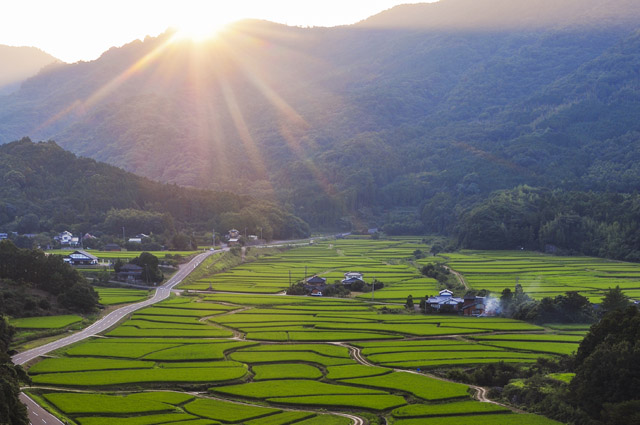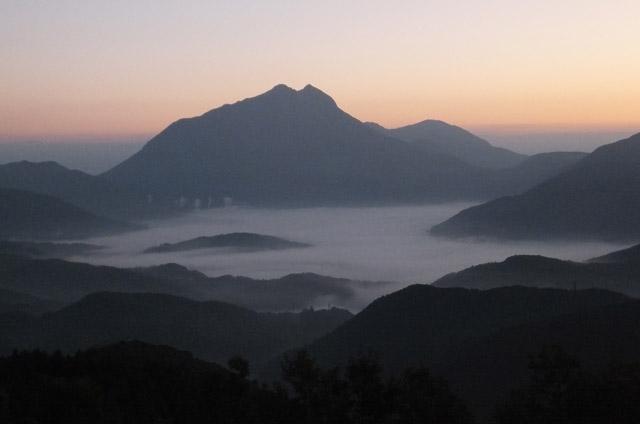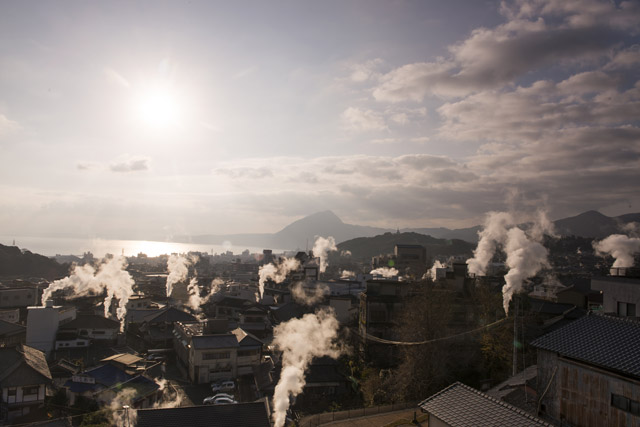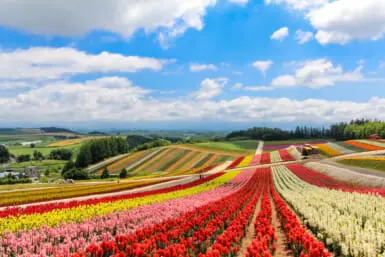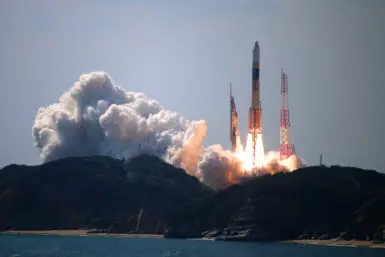Varied landscapes, onsen resort towns, and a rich cultural and culinary heritage are just part of this Inland Sea prefecture’s appeal.
In the old records of Japan, it is written that before all the islands of the country were united under one leader, the legendary 12th Emperor of Yamato, Keikō, was searching for an ideal point to make his landing on Kyushu. The region that he chose became the main waypoint for the armies of Yamato (what we now call Honshu) as they moved through this southern island. In honor of its strategic importance, the region was dubbed Toyo-kuni—Abundant Land—and much of it now makes up the prefecture we call Oita.
Originally, Oita was the name of one of the districts within Toyo-kuni, and is said to come from the phrase okita, which used to mean “many fields.” While the pronunciation of this phrase has changed since those distant times, Oita has a rich and varied landscape, encompassing rugged coastlines, Kyushu’s highest peak, and picturesque meadows with rolling hills. The abundance of this land includes a wealth of natural hot spring water, artistic and cultural treasures, and a hoard of culinary delights.
Sights
One of Oita’s hallmark spectacles does require you to sacrifice some sleep during your vacation. Early in the day, before the layers of morning mist have burned off, the valleys by the cities of Yufu and Kusu are filled with dense blankets of white, a vista that is well worth the early morning wakeup.
Down the coast from Beppu lies the town of Usuki, where Buddha figures carved on a rock face can be found. Cut into the cliffs outside the city, the Usuki Sekibutsu, or stone Buddhas, sit in silent contemplation as they have since the Heian Period. Tourists can rent bicycles for free at the Usuki JR station, and this National Treasure site is only a short ride away.
Onsen
Every minute, the geothermal energy that lies underneath Oita Prefecture boils enough spring water to fill Tokyo Dome two and a half times over. Only the area around Yellowstone Park in the United States bests Oita for production of hot spring water, and for onsen lovers, Oita can be a true paradise.
An excellent way to relax any time of year, the onsen is even better during the winter months—an energy boost in the morning or a way to warm up after a day outside. Different springs contain different minerals, including water that is rich in iron, carbonates, and even sulfur. There are eleven types of hot springs in the world, and only in Beppu can you sample ten. The mineral content makes for baths that come in a variety of colors—most of the hot springs are clear, but there are also hot springs in brown, milky white, and sky blue. They are also said to be good for treating various ailments, from high blood pressure to diabetes. While not a substitute for medicine, the onsen’s power to invigorate can’t be disputed.
Several resort towns have sprung up to make the most of the wealth of Oita’s natural hot springs; two of the best known are Beppu and Yufuin, which are known for their relaxed pace, and their wide variety of onsen. From afar, you can recognize an onsen resort town by the steam from the chimneys scattered throughout the cities. And in the towns, it’s not unusual to see visitors walking about in yukata as they pass the day going from bath to bath, sampling the different qualities of the various baths.
In addition to the hot springs that you can soak in, there are many locations where the heat from the earth spits up steam, mud, and very hot sand. They are called jigoku, or hells, and by the name, you know they’re not the type of place to dip your toes into. However, the many hues of these various hells are one of the signature sights of this region.
A Bountiful Table
Mineral-rich waters that spring from Oita’s earth feed land’s rich crops and healthy livestocks on land and sea. From the Inland Sea come the fresh tastes of local mackerel and fugu, or pufferfish, which is well known for its delicate flavor. The Bungo area of Oita is home to what some experts call the origin of wagyu beef, and the meat of these cows is famed for its rich marbling and superb taste. Shiitake mushrooms, an established star in kitchens around the world, are another celebrated product of the region.
If you’d like to get a sample of the flavors of Oita’s many fields without having to roam too far afield from Tokyo, the restaurant Zarai Oita in Yurakucho offers a full selection of meals based on the fresh tastes and ingredients of this rich land.
Culture and Art
To be reminded of the richness of Oita’s cultural heritage, you need only look at the face of the ¥10,000 bill: Yukichi Fukuzawa, the founder of Keio University, was a native son of Oita. In the spirit of later foundations like the National Trust, Fukuzawa chose to buy a large plot of land near his childhood home to protect the scenery.
Not far from that land is the Kunisaki peninsula, location of Oita Airport and a site of inspiration for artists both ancient and modern. The stone temple of Rokugo Manzan, an early Buddhist culture that is unique to the region, can be visited by paths that wend through the mountainous area, and contemporary art projects such as the Kunisaki Art Festival contribute to the region’s artistic environment.
Bamboo ware, or takezaiku, is a traditional practice that dates back to the 14th century and the baskets used by local peddlers. Since then, takezaiku has been a craft that is deeply wedded to daily life in Oita, and a much-loved symbol of Beppu’s craftwork. Thanks to the discipline of modern artisans, this age-old craft has evolved into a true art form, yielding products that are both exquisite and practical. And bamboo lanterns take center stage in many festivals, transforming streets and temples into large-scale light sculptures.

